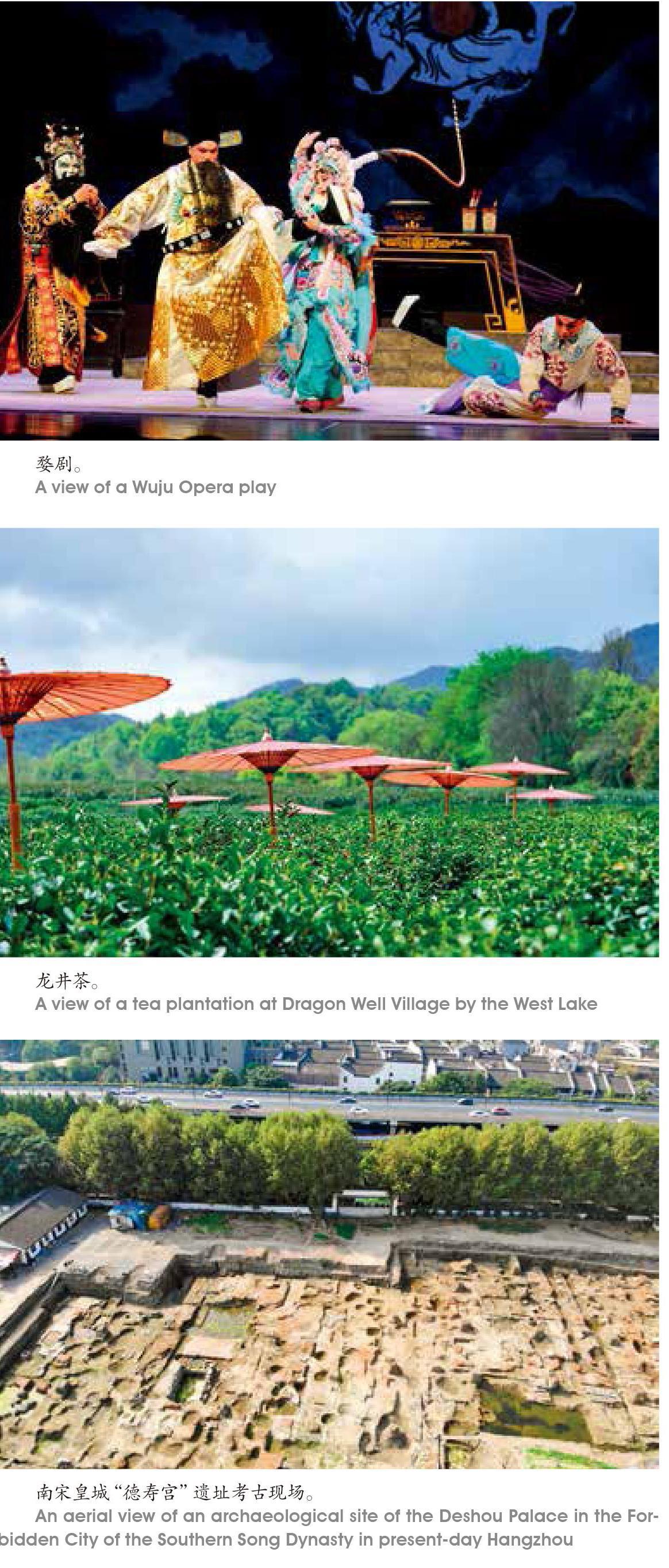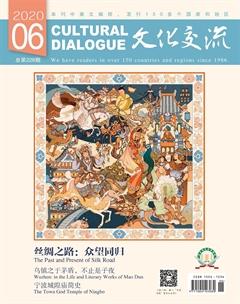首批20项“浙江文化印记”诞生
李玲玲



浙江歷史悠久、源远流长。在这片神奇的土地上,浙江人民创造了千姿百态、光辉灿烂的文化成果。
经过一年的征集、评审,2020年5月首批共20项“浙江文化印记”在杭州诞生。
按照历史时序排列,首批“浙江文化印记”分别是:河姆渡遗址、良渚古城遗址、杭嘉湖丝绸、青瓷、西施传说、绍兴黄酒、天台山、《兰亭序》、京杭大运河浙江段、杭州西湖、普陀山、钱塘潮、南宋皇城遗址、南宗孔庙、浙东学派、婺剧、龙井茶、西泠印社、南湖红船、越剧。
浙江历史悠久、源远流长,是中华文明的发祥地之一。在这片神奇的土地上,浙江人民创造了千姿百态、光辉灿烂的文化成果,文物遗迹数不胜数,文化精品琳琅满目,文化样式异彩纷呈,为丰富和发展中华文化作出了重要贡献。发掘好、传承好、利用好浙江优秀传统文化资源,是历史赋予我们的重要使命。去年以来,“浙江文化印记”征集评选活动在浙江开展。通过广泛征集、专家评审和社会投票,不久前产生了首批20项“浙江文化印记”。
本次征集评选范围分物质形态和非物质形态两大类,以历史文化资源和文化现象为主,兼顾现当代,主要包括遗址文物、历史事件、思想学派、著作著述、艺术样式、文化机构、民俗节庆、经典产品、文化地标等9个门类,文化人物未列入本次评选。
从首批20项“浙江文化印记”的类别来看,品种丰富,较为全面地展现了浙江悠久的历史和深厚的文化底蕴。这20项“文化印记”中,有遗址文物5项,包括杭州西湖、京杭大运河浙江段、良渚古城遗址等被列入世界文化遗产名录的项目;有经典产品4项,包括杭嘉湖丝绸、青瓷、龙井茶、绍兴黄酒;有艺术样式两项,为越剧、婺剧;历史事件1项,为南湖红船。从项目地域分布来看,覆盖了我省11个地市。
在征集评选的条件上,要求具有“四个性”:一是经典性,为浙江优秀文化代表。如入选的《兰亭序》,为“天下第一行书”,是书圣王羲之的代表作,是思想性和艺术性相统一的文化精品,是经得起历史检验的传世之作;二是地域性,体现地方文化特色,为当地文化标记标识。如西湖、普陀山,就是杭州、舟山这两个地方最具代表性的文化地标;三是独特性,为浙江独有。如越剧和婺剧,就是诞生在浙江、成长在浙江的传统剧种,具有独一无二的特征;四是传承性,承载文明、传承文化,维系民族精神。如本次入选的浙东学派,继承和发展了浙东学术史上的优良传统,博纳兼容,倡导“经世致用”,几百年来始终浸润、滋养着浙江人民,影响着浙江人民的价值追求,其中的永嘉学派也是当代浙江人“敢为天下先”创业创新精神的源头活水。
这20项浙江文化印记是怎么脱颖而出的?
因为“浙江文化印记”征集评选关乎浙江的文化发展,影响着百姓的精神文化生活,所以体现规范性、专业性,体现广大群众的参与度、认同度就是题中之义。本次“浙江文化印记”征集评选活动,就包括四个阶段——
征集工作于2019年5月5日启动,通过各县(市、区)、市、省级宣传文化单位层层筛选,逐级报送。除此之外,省级主要媒体发布《“文化印记”征集令》,开设网上征集通道,接受社会各界人士积极参与。至去年7月底止,共征集到参评项目399个。
坚持用史实和数据说话,对参评项目进行反复论证,严把质量关。经过3轮专家评审,从399个项目中筛选出30个首批“文化印记”候选项目,形成首批“文化印记”建议名单。
去年11月,通过省级主要媒体,对30个首批“文化印记”候选项目进行群众投票,社会各界热心人士积极响应,仅钱江晚报小时新闻客户端阅读量就达95.3万、公众投票量12.5万。
在群众投票的基础上,主办方召开专题会议进行综合评审,从30个候选项目中选取20项作为首批“浙江文化印记”建议名单提交并最终审定。
On May 15, 2015, a press conference was held in Hangzhou to announce the 20 representative cultural symbols of Zhejiang. Chronologically, the twenty symbols are as follows: the site of Hemudu Culture, the ancient city of Liangzhu Culture, Hangzhou-Jiaxing-Huzhou silk, celadon, the legend of Xi Shi, the Shaoxing rice wine, Mount Tiantai, , the Zhejiang section of the Beijing-Hangzhou Grand Canal, the West Lake of Hangzhou, Mount Putuo, the tidal bore of the Qiantang River, the site of the imperial city of the Southern Song, the Confucius Temple of the South, the Eastern Zhejiang School, Wuju Opera, Dragon Well Tea, Xiling Seal Art Society, Red Boat of the South Lake, Yueju Opera. It is the first time that Zhejiang is culturally identified. There will be more cultural symbols of the province to be identified.
The selection is confined to both tangible and intangible categories. The first list does not include cultural figures. The two categories include historical and cultural resources and cultural phenomena of the past and the present in nine subcategories: ancient archaeological sites, historical events, thought and academic schools, writings, art genres, cultural institutions, folk celebrities, traditional products, and physical cultural signposts.
The work of the public selection of the cultural symbols started on May 5, 2019.
The recommendation was done by cultural institutions across Zhejiang in respective cities and by the general public online. By the end of July 2019, there had been 399 candidates recommended.
Then experts were engaged to review the long list. The 399 candidates were scrutinized on the basis of historical facts and data. After three rounds of reviews, 30 were shortlisted. Last November, the 30 candidates were issued on news media for the public voting. Hundreds of thousands voted.
With the votes in, the organizers held a special session to finalize a list of 20 winners.
The first 20 are indeed representative cultural symbols of Zhejiang. Of the 20, there are five cultural heritages. The West Lake, the Zhejiang section of the Beijing-Hangzhou Grand Canal, and the archaeological site of Liangzhu City are UNESCO world heritage sites. Silk, celadon, Dragon Well Tea and Shaoxing rice wine are time-honored regional products. In the subcategory of art genres are Wuju Opera and Yueju Opera, two unique regional operas that enjoy wide popularity. The Red Boat of the South Lake symbolizes the founding of the Communist Party of China in 1921. The founding fathers of the CPC met in the boat on the lake and ushered in a political party that has brought huge and fundamental changes to China. Eastern Zhejiang School is on the list essentially because the prominent academic group left huge impact on the history of Zhejiang. The school emphasized that knowledge should lead to pragmatic applications and bring benefits to the general public. What the school championed so many centuries ago is on the mind of the people in Zhejiang. The Yongjia School, part of the Eastern Zhejiang School, upheld “dare to pioneer,” a cultural characteristic of the province, which has made Zhejiang stand out as a daring pioneer in Chinas reform and opening up to the outside world. is a unique cultural treasure Zhejiang boasts. Calligrapher Wang Xizhi (303-361) wrote this timeless essay after a springtime gathering in Orchid Pavilion in Zhejiang. The handwritten masterpiece is part of the canon of Chinese calligraphy. The West Lake and Mount Putuo are physical cultural landmarks of Hangzhou and Zhoushan respectively.

